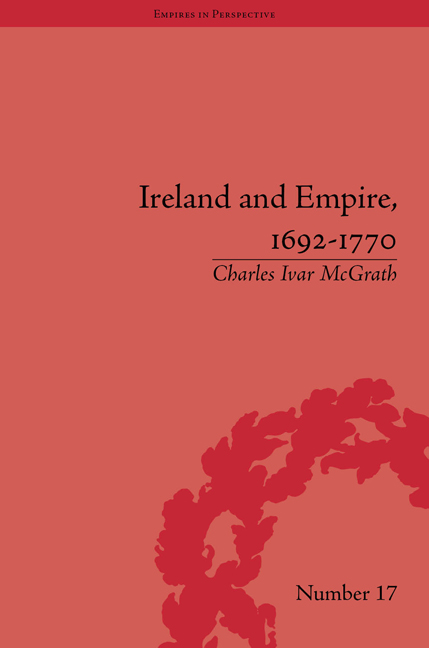6 - An Army for Empire
from Part 2 - Manpower
Summary
The Irish military establishment served a number of purposes. It provided a barracks for the single largest part of Britain's standing army in peacetime. It provided an army in Ireland for internal defence and policing and security from external threats. Last but not least, it provided soldiers for different European and colonial conflicts and concerns – an army for empire. This latter function however has either been overlooked or misunderstood by historians. It is therefore necessary to enter into a consideration of the draughts of soldiers and number of regiments sent abroad from Ireland, the number paid for out of Irish revenues, the locations to which they were sent, their purpose abroad, and their contribution to the British Empire and its expansion during the period 1692–1770.
It has been argued that the ‘priorities of the eighteenth-century British army were at home or in Europe. It was only slowly turned into an instrument for protecting Britain's colonies or subjugating those of other powers.’ For the first half of the century, colonial wars were ‘limited ones largely waged by colonial forces … or the troops of the East India Company’. However, from the middle of the century onwards ‘there was a marked increase in the deployment of the army overseas’. During the Seven Years’ War, 20,000 British regular soldiers served in North America, while that number had increased to 50,000 by the time of the American War of Independence. This level of commitment was not overly significant when considered in relation to the number of men voted by parliament for the army each year: the average figure was 76,404 during the Nine Years’ War; 92,708 during the War of the Spanish Succession; 62,373 during the War of the Austrian Succession; 92,676 during the Seven Years’ War; and 108,484 during the American War. Peacetime figures were significantly less, though from the 1760s onwards the costs ‘rose sharply with the augmentation of the garrisons kept permanently in the West Indies and North America’.
- Type
- Chapter
- Information
- Ireland and Empire, 1692–1770 , pp. 143 - 166Publisher: Pickering & ChattoFirst published in: 2014



